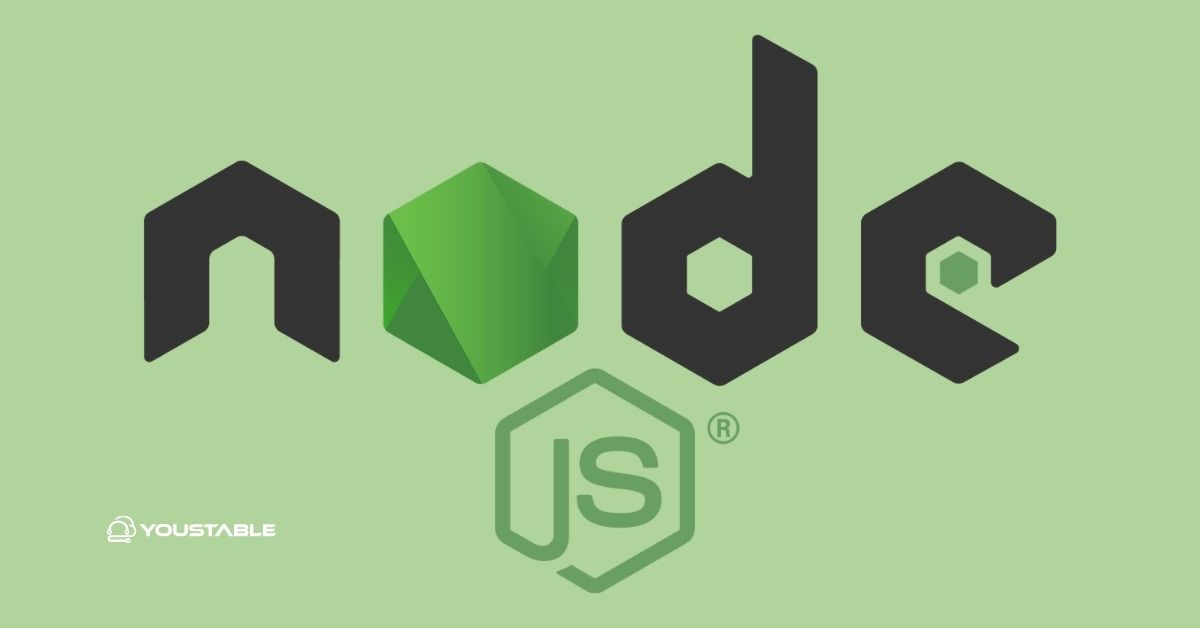Node.js has become one of the most popular tools in modern web development. Whether you’re building APIs, real-time chat apps, or even IoT solutions, chances are you’ve come across Node.js. But what exactly is it, and why do developers around the world favor it? Let’s dive in.
In this article, we’ll look at what Node.js is, how it functions behind the scenes, and why it has gained such strong adoption among developers. You’ll learn about its core features, how it compares to traditional backend technologies, and its key benefits for building modern, high-performance, scalable web applications.
What is Node.js?

Node.js is an open-source, cross-platform runtime environment that allows you to run JavaScript code outside a browser. It was developed by Ryan Dahl in 2009 and is built on Chrome’s V8 JavaScript engine, which compiles JavaScript into native machine code for fast performance.
Unlike traditional JavaScript, which runs only in the browser, Node.js lets you run JavaScript on the server, making it possible to build full backend services using the same language used on the frontend.
How Node.js Works
Node.js is a runtime environment that lets you run JavaScript code outside the browser, usually on the server. It’s built on Google Chrome’s V8 engine, which makes it very fast at executing JavaScript code.
What makes Node.js different is the way it handles tasks. Instead of waiting for one task to finish before starting another (like many traditional server technologies), Node.js uses a non-blocking, event-driven model. This means it can handle many requests at once without slowing down, making it perfect for apps that deal with lots of users or data simultaneously.
Node.js runs on a single thread using something called the event loop. This loop listens for events (like a new user request) and responds when ready, without freezing or blocking other operations. This design makes Node.js lightweight, efficient, and great for real-time applications like chats, notifications, and live updates.
In short, Node.js helps developers build fast, scalable, and modern server-side applications using JavaScript—the same language they already use in the browser.
Core Features of Node.js
Node.js has several powerful features, making it a top choice for developers building fast and scalable applications. From its asynchronous architecture to its vast ecosystem, these core features allow developers to write efficient server-side code using JavaScript.
Fast Execution with V8 Engine
Node.js uses Google’s V8 engine, which compiles JavaScript directly into machine code. This makes execution extremely fast and efficient, especially for data-intensive and real-time applications.
Asynchronous and Non-blocking I/O
Node.js handles I/O operations like reading files or querying databases asynchronously. This means it doesn’t block the rest of the program, allowing it to simultaneously serve multiple requests without delays.
Single-Threaded but Highly Scalable
Although Node.js runs on a single thread, it uses an event loop to handle multiple connections concurrently. This design makes it lightweight and able to scale efficiently for large applications without consuming too many resources.
Cross-Platform Support
Node.js works on major operating systems like Windows, macOS, and Linux. Developers can write cross-platform code that runs reliably across environments with minimal changes.
Built-in Package Manager (npm)
Node.js comes with npm, the largest ecosystem of open-source libraries. With npm, developers can easily install, share, and manage packages, speeding up development and reducing the need to write everything from scratch.
Why Developers Should Use Node.js
Node.js has become a top choice for developers due to its speed, scalability, and the ability to use JavaScript on both the frontend and backend. Its event-driven architecture and vast package ecosystem are ideal for building fast, efficient, modern web applications across various use cases.
High Performance and Scalability: Node.js runs on the V8 engine and handles multiple connections using a non-blocking event loop, which allows it to serve thousands of users without slowing down. This makes it ideal for building scalable and performance-focused applications.
Rich Ecosystem of Packages: With over a million packages available through npm, developers can find tools and libraries for nearly any task. This accelerates development and allows for building robust applications without reinventing the wheel.
JavaScript Across the Stack: Node.js enables developers to use JavaScript on both the front and backend, simplifying development and reducing context switching. Teams can work more efficiently with a shared language and codebase.
Real-time Capabilities: Thanks to its event-driven nature, Node.js is perfect for real-time applications like chat apps, live notifications, and online games. It handles data flow between client and server instantly and efficiently.
Active and Growing Community: Node.js has a large and vibrant community that contributes to its constant improvement. Developers can access many tutorials, documentation, forums, and tools to solve problems and speed up development.
Check Out | Master Java Servlets: 5 Benefits You Need to Know!
Comparison: NodeJS vs Python vs Java
| Aspect | Node.js | Python | Java |
|---|---|---|---|
| Performance | High performance for I/O-heavy, real-time tasks | Slower than Node.js, but suitable for many applications | High performance, especially for CPU-heavy tasks |
| Language | JavaScript (or TypeScript) | Python | Java |
| Real-Time Capabilities | Excellent (supports WebSockets, real-time apps) | Can be done with frameworks like Django Channels, but less native than Node.js | Can be done, but not as seamlessly as Node.js |
| Concurrency Model | Event-driven, non-blocking I/O | Multi-threaded, supports async/await (Python 3.5+) | Multi-threaded, supports concurrency via threads |
| Learning Curve | Easy for JavaScript developers | Easy to learn, simple syntax | Steeper learning curve due to strict typing and verbose syntax |
| Ecosystem | Huge (npm, millions of libraries) | Large ecosystem, but fewer packages for real-time and concurrency compared to Node.js | Huge ecosystem, especially for enterprise-level applications |
| Community Support | Large and active community | Large and active community | Very large and active, especially in enterprise environments |
| Scalability | Excellent for I/O-heavy, real-time apps | Good, but may require more effort for highly scalable applications | Excellent, especially for large-scale enterprise applications |
| CPU-Heavy Tasks | Not ideal for CPU-intensive operations | Slower for CPU-heavy tasks compared to Java, but still handles them well | Web servers, real-time applications, APIs, and microservices |
| Development Speed | Fast (especially for full-stack JS development) | Fast, with rapid prototyping (ideal for data science, web apps) | Slower due to boilerplate code and longer compilation times |
| Use Cases | Web servers, real-time applications, APIs, microservices | Data science, web applications, automation, scripting | Excellent for CPU-heavy tasks due to multithreading and JVM optimisations |
Pros and Cons of Node.js
| Pros | Cons |
|---|---|
| Fast and scalable | Not ideal for CPU-heavy tasks |
| Uses JavaScript across the stack | Callback hell in older code (though largely mitigated by async/await) |
| Large ecosystem | Some packages may lack strong documentation or support |
| Real-time capabilities | |
| Lightweight and efficient |
Conclusion
Node.js is a powerful tool for developers building fast, scalable, modern applications. It simplifies full-stack development by enabling JavaScript on the server, offers real-time capabilities, and boasts a rich ecosystem of tools and libraries. To learn more, explore the official Node.js documentation.


